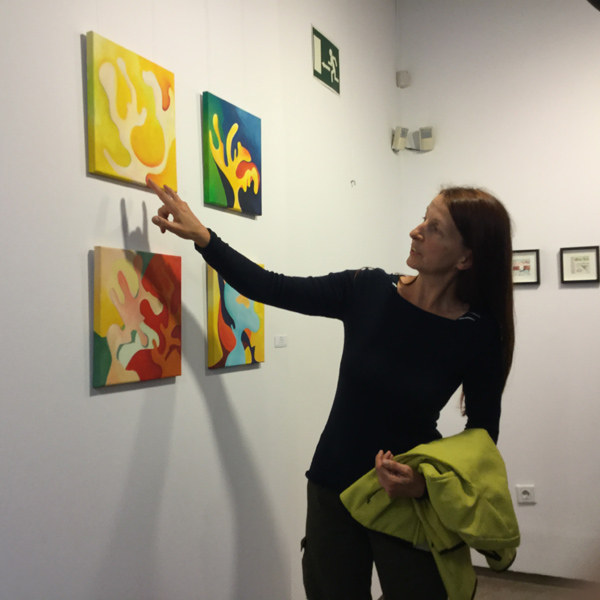Synaesthesia - a secret language?
Continued artistic research on the shapes of sounds
2018
|
 |
|
Für die "V International Conference on Synesthesia, Science and Art" in Alcalá la Real / Spanien vom 18-22nd May 2018 arbeiteten die zwei Künstler und Synästhetiker Dr. Timothy B. Layden (International Artecitta Foundation, UK, timothy@tblayden.com ) und Christine Söffing (Synästhesiewerkstatt & Center for Music & Art, Ulm University info@synaesthesiewerkstatt.de) weiter an ihrem Projekt, die synästhetisch wahrgenommenen Formen der Klänge zu vergleichen und untersuchen.
|
|
Könnte es sein, das die synästhetische Wahrnehmung einer Klangform eine Art Geheimsprache ist oder sind die Formen allgemein verständlich und interpretierbar?
|
Wäre es möglich, dass eine professionelle Sängerin die Formen der gemalten Kompositionen entschlüsseln und singen könnte?
Und wenn sie diese singen würde, wie würden dann andere Künstler diese Tonspur wiederum visuell darstellen?
Die gemalten Kompositionen waren ausgestellt im Museo Palazzo Abbatial. 18th - 21th may 2018. Alcalá la Real, Spain
|
 |
 |
ABSTRACT:
In 2014/15 Layden, Schmidtke and Söffing collaborated on an investigation comparing the perceived shapes created by the stimulus of specific sounds. The projected was initiated as a result of Söffing's and Layden's involvement in conferences on synaesthesia and the recognition by both that they experienced similar types of synaesthesia, which they both referred to in their distant art practices. Their investigation initially focussed on comparing their own experiences but went on to further investigate those of others: synaesthetes and non-synaesthetes as well as those with and without visual art skills. They created special sounds to compare synaesthetic sound shapes. They found interesting similarities between Laydens and Söffings "synaesthetic sound shape" perceptions, which held relations with other artists with synaesthesia who took part in their experiments. Based on these results, they continued their artistic research.
A professional singer, Esther Kretzinger, a soprano, was asked to sing, A. drawings and B. singing exercises. The sounds were recorded and drawn by Söffing and Layden. Esther was then asked to sing their drawings. In this new research they want to find out, through a drawing-singing-drawing-singing procedure whether it would be possible to find visual synaesthetic form symbols / icons instead of musical notes. If so, it could theoretically be possible to ask any musician to play synaesthetic form symbols / icons. Other musicians will be asked to interpret the same drawings from initial experiments with Esther. The resultant sounds will be compared, looking at changes in pitch, tempo, volume. Visual artists will also be asked to interpret the sounds and these will also be compared.
The question is: Is the synaesthetic sound to shape perception a secret language or one that is inefeble in terms of 'normal' written or spoken language yet still interpretable?
Keywords: shapes of sounds, artistic research, synaesthesia and art, musical interpretation
Der Vortrag wurde veröffentlicht im englischsprachigen Tagungsband:
Layden, Timothy B.; Söffing, Christine: Synaesthesia - a secret language?
Continued artistic research on the shapes of sounds. V International Conference on Synesthesia, Science and Art, Alcalá la Real, 18- 21nd May 2018. In: Version digital, Abril de 2018. Primera Edición/First Edition: April 2018. E-book ISBN: 978-84-948665-0-0. Editoral: Fundatión International Artecittà.
|
|



